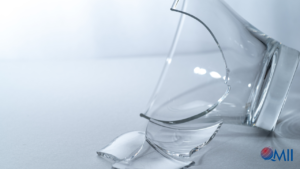ISO 14001 Lead Auditor training introduces students to the ISO 14001 standard and its interpretation as well as the skills needed to assess the effectiveness of the environmental management system. ISO 14001 in its 2015 revision introduces the lifecycle perspective. In essence, the standard asks organizations to use a lifecycle perspective when designing/manufacturing their products/services. This means that instead of a cradle to grave concept organizations need to think of a cradle to cradle concept.
Cradle to Grave
ISO 9001 ‘Requirements for Quality Management Systems’ ushered in a new era of process-based management systems that could be used to improve the quality of products/services being delivered to customers as well as when well implemented to increase efficiency and productivity. However, as productivity, efficiency and quality were being improved; the by-products of the system were not addressed. During the 1980s there were some regional efforts to address the impact of organizations on the environment and ISO 14001 was ISO’s effort to lay down the requirements for a management system that addressed the aspects and their associated impacts. Organizations were expected to take action on these impacts to reduce them. Auditors undergoing ISO 14001 Lead Auditor training were now ready to assess the effectiveness of these systems.
In its initial publication and subsequent revision in 2004 ISO 14001 asks organizations to take a ‘cradle to grave’ approach to managing their impacts on the environment. This meant reducing the immediate impact on the environment. However, with time we learned that this does not address the growing landfill issues being faced by countries globally. To address this issue as well as to align with international efforts to address climate change, rapid depletion of the planet resources and encourage sustainable operations the ISO 14001 standard introduced the concept of ‘cradle to cradle’ in its 2015 revision.
Cradle to Cradle
ISO 14001 defined lifecycle as “consecutive and interlinked stages of a product (or service) system, from the raw material acquisition or generation from natural resources to final disposal.” Life cycle stages can include the acquisition of raw materials, design, production, transportation/delivery, use, end-of-life treatment, and final disposal. A great example of a lifecycle perspective in manufacturing is the recycling of Lead-Acid Car Batteries. Nearly 99% of these batteries are recycled/reused. Major battery manufacturers have programs in place to encourage the recycling of car batteries.
While ISO 14001 does not call for a formal life cycle assessment ISO 14044 provides the guidelines for a life cycle assessment should an organization wish to do so. In determining the end of life disposal organizations may choose products that are recyclable, sustainable and even perhaps biodegradable. ISO 14001 lead auditor training provided by QMII, highlights the concepts of a lifecycle perspective and how to incorporate it into your environmental management system.
Conclusion
ISO 14001 Lead Auditor training enables participants to go back and implement environmental management systems that will benefit their organization, the environment, and stakeholders. It also enables participants to conduct value-adding audits of their systems. The intent of the audit is to identify opportunities for improvement. With the skills, ISO 14001 Lead Auditor training by QMII and the knowledge of a life cycle perspective participants are ready to hit the ground running in implementing and auditing environmental management systems.




